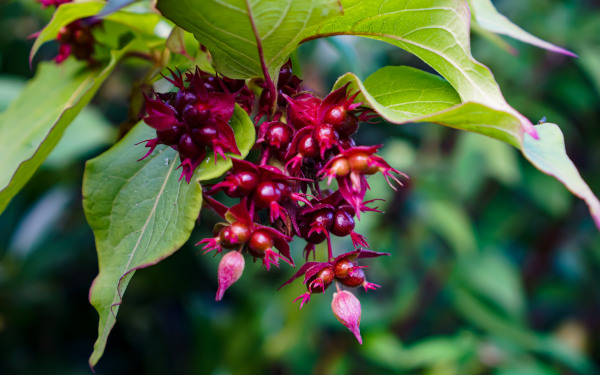How to grow Leycesteria
This member of the honeysuckle family is a genus of around 6 suckering deciduous shrubs, of which we stock the highly ornamental, upright, thicket forming Leycesteria formosa and its cultivars. This species is valued for its shapely, pointed foliage and mass of pendulous blooms which are white with rich claret-red bracts. Its stems are hollow and bamboo-like, and in autumn the flowers give way to glossy, purple-red berries.
Leycesteria is known to be resistant to air pollution, salty sea air, and deer, making it suitable for urban, coastal, and rural situations. It is also drought tolerant and therefore a wise choice in our changing climate.
Leycesteria formosa is also known by the common name Himalayan honeysuckle.
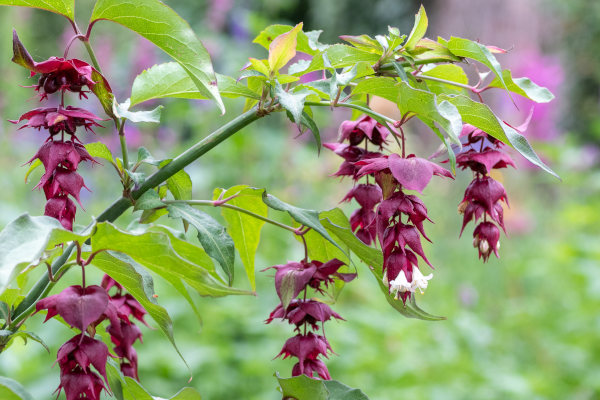
Zantedeschia is a genus of flowering plants from the family Araceae and is native to southern Africa. With a rich history dating back to the Ancient Romans, these deciduous or semi-evergreen perennials have been used as a symbol of celebration. Zantedeschia was Named after Professor Giovanni Zantedeschia, an Italian botanist.
There are two main forms of Zantedeschia: hardy and tender. Hardy forms of the plant can be grown outdoors, enjoy moist soil and full sun or partially shaded conditions - these are known as Arum lilies. Tender forms of Zantedeschia prefer being grown in containers or pots and should be brought inside over the winter - these are known as Calla lilies.
With tuberous flora in all colours from whites, yellows and oranges to deep reds and purples, Zantedeschias are not to be overlooked in any garden, as long as they have sufficient sunlight to grow in.
Ready to learn more about growing Zantedeschia? Read on for all there is to know...

Key Information
Soil pH
Position
Hardiness

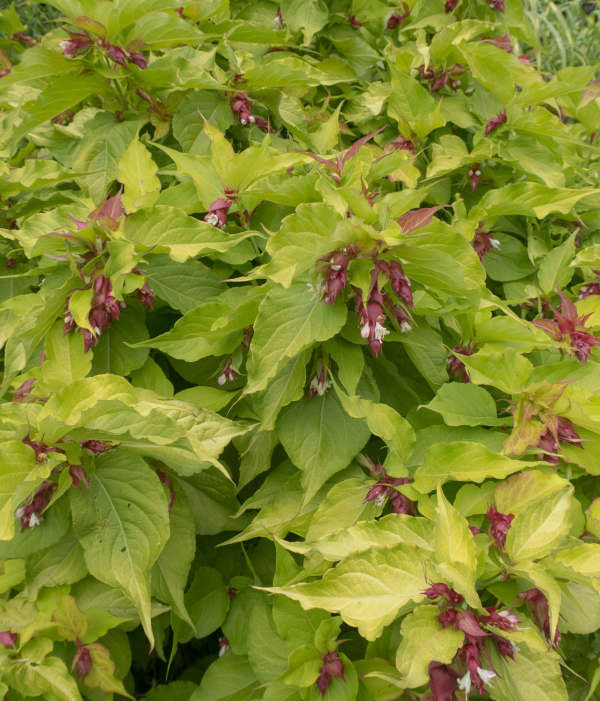
Where & when to plant Leycesteria
Position- Sheltered from cold, drying winds, in full sun or partial shade
Soil- Will grow almost anywhere
Flowering Period- Summer to early autumn
Hardiness- Hardy to between -10°C and -15°C
For best results, plant in autumn or spring. An autumn planting is suitable for those gardening in ‘mild’ conditions, (broadly speaking, the southern half of the UK). For those liable to very cold winters or waterlogged ground, it is best to wait until spring, (generally the northern half of the UK, or anyone gardening on heavy, clay soil).
The natural habitat of leycesteria ranges from cliffs to mountain woodland, showing just how versatile this shrub can be. It will, essentially, grow almost anywhere: from a deep, moist border to a parched crack at the base of a stone wall, and from bright sunlight to almost full shade. It is often grown as a useful source of colour in woodland gardens or shady spots, and can make a spectacular container plant.
How to plant Leycesteria
In the ground
- Clear the chosen area of weeds.
- Dig a planting hole several times larger than the root ball. If you are gardening on soil that is poor, dry, or stony it is a good idea to mix in some well-rotted organic matter at this stage.
- Place the plant in the hole, ensuring the top of the root ball sits level with the surface of the soil. Too low and the plant may rot, too high and the roots can dry out.
- Backfill with soil and firm in gently.
- Soak well with water.
- Mulch around the base with well-rotted organic matter.
In a container
- Choose an appropriate container. The eventual size of leycesteria can vary considerably (we stock both full size and dwarf varieties), so do check individual descriptions for details.
- Use a good quality potting compost with plenty of horticultural grit mixed in, and, if not already present in the compost (check the description on the bag) some slow-release fertiliser granules.
- Start by partially filling the pot with compost; enough so that when placed on it the upper surface of the root ball is about 3cm lower than the top of the pot.
- Infill all the space surrounding the root ball with compost, firming down with your fingers then adding a little more so the plant is held tight.
- Pick up the pot (if you can!) and lightly tap on the potting bench or ground a few times to help further settle the compost around the plant.
- Soak well with water.
- A mulch with horticultural grit will look attractive and help to prevent a ‘cap’ or crust forming on the top of the compost (something container plants can suffer due to the artificial nature of their watering).
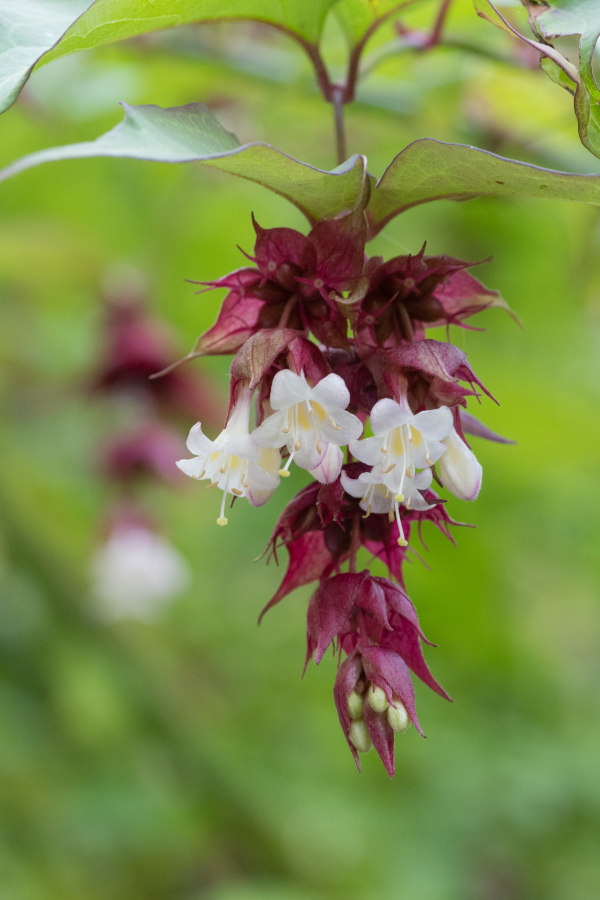
What to plant with Leycesteria
Leycesteria mixes easily with a range of planting styles and can be a useful source of height and rich colour in anything from a shrubbery to a cottage garden border, or even an exotic scheme. Perhaps our favourite use is as woodland understory planting, along with catalpa (coppiced every year to generate its enormous leaves), cotinus, and rhododendron.
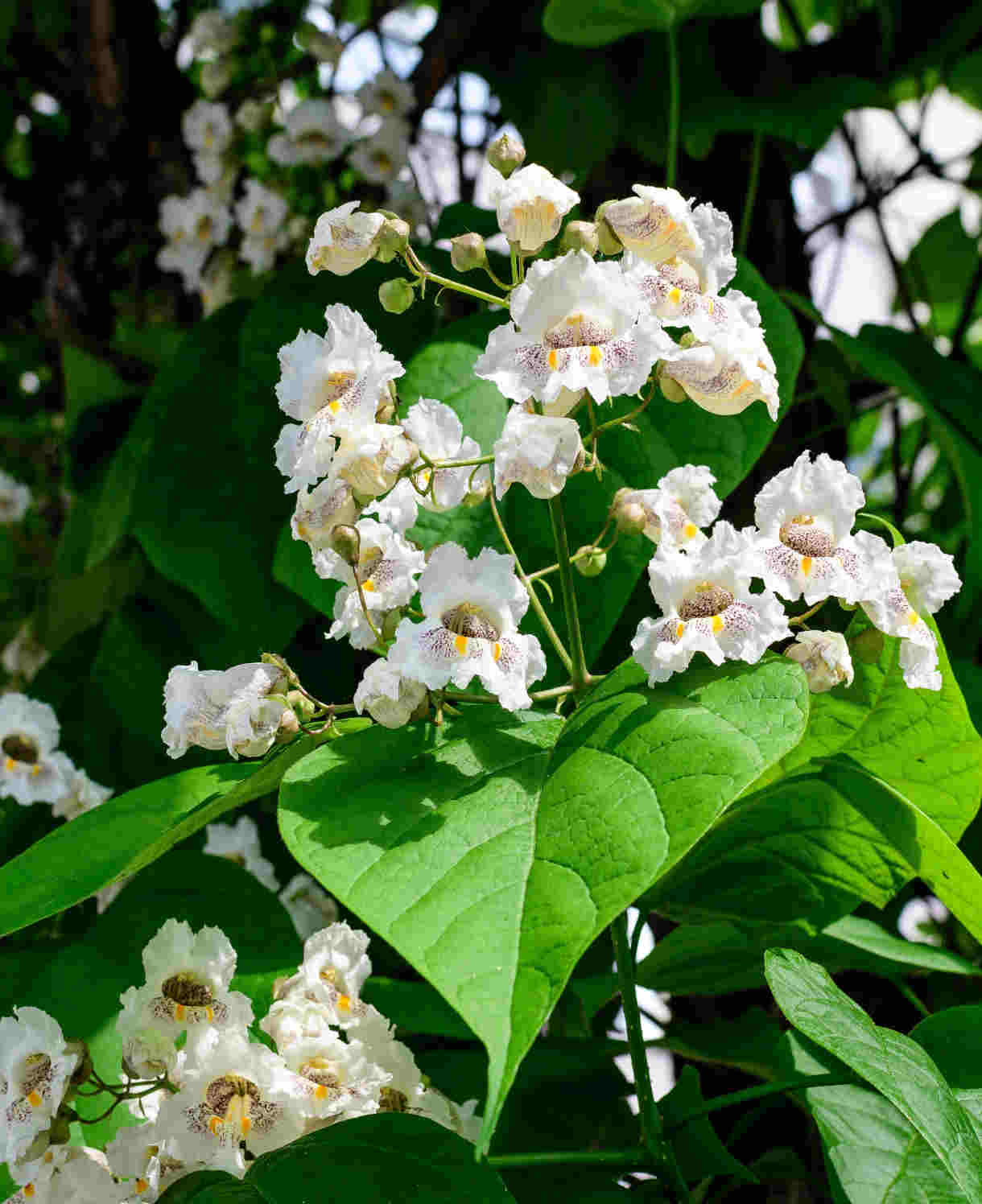
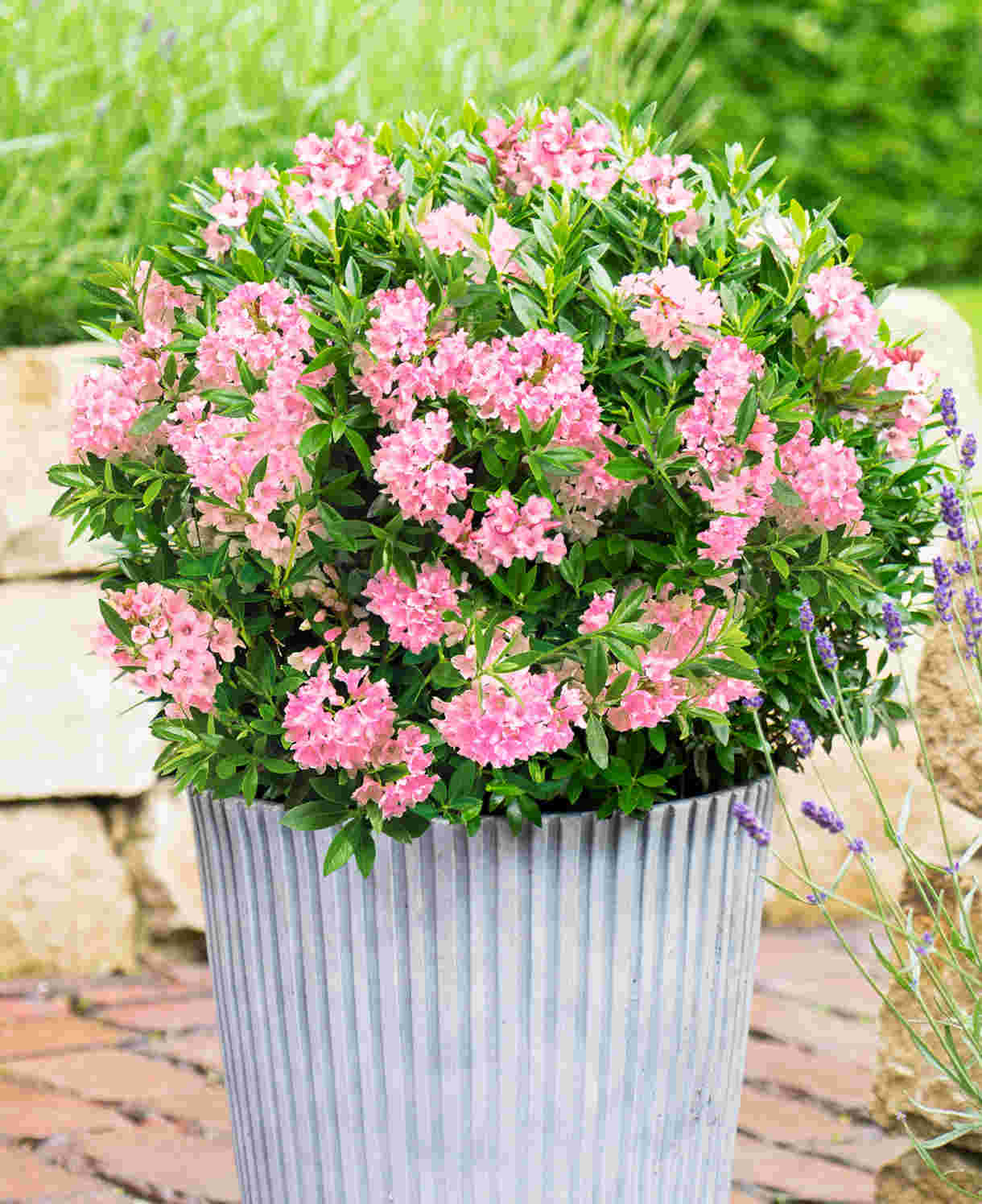
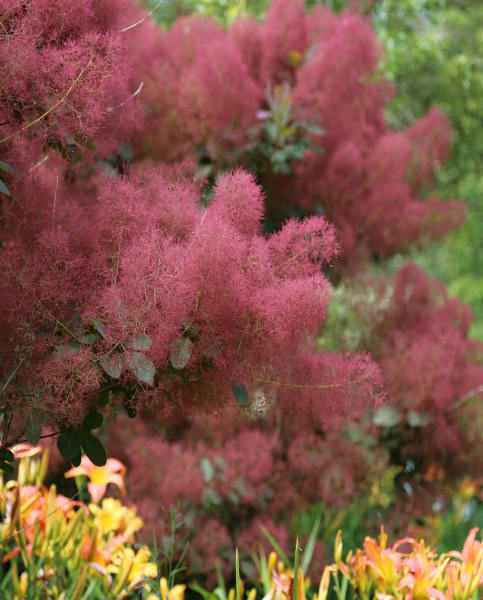
How to care for Leycesteria
Pruning and Deadheading
A vigorous habit and natural suckering tendency means this shrub can colonise an area relatively quickly. In larger gardens or wildlife areas this can be a useful quality. In smaller spaces, growth can be kept in check with annual pruning. Cut back hard (leaving stubs a few centimetres tall) each year in early spring and remove any excess suckers to restrict spread.
Watering
Water leycesteria regularly until established, after which it tends to look after itself.
Container grown leycesteria will require watering throughout the growing season. Allow the top few centimetres of compost to dry out between soakings.
Cold Protection
Leycesteria is as hardy to -15°C and will therefore overwinter easily in most of the UK with no need for additional protection.
Leaving stems unpruned until spring offers extra insulation against deep freezes.
Pests and Diseases
Leycesteria is trouble-free.
How to propagate Leycesteria
Leycesteria can be propagated easily by softwood cuttings in early summer.
- Find non-flowering shoots and snip off the top 5-10cm.
- Put these in a plastic bag straight away to prevent drying out.
- Fill a container with a compost mix which is at least 50% perlite (or if you prefer, as we do, 100% perlite).
- Trim the end of the cutting to just below a node (point at which leaves grow).
- Remove the lowest leaves, leaving 2-4 on the cutting.
- Insert the cuttings into the compost and water lightly. Several cuttings can be put in the same container if there is enough space to do this without them touching.
- Place in a greenhouse or propagating unit if you have one or covered with a plastic bag on a windowsill if not (out of direct sunlight).
- Keep the cuttings misted and occasionally watered until they root. You will know this has happened when roots emerge out of the bottom of the container.
- Gently remove rooted cuttings and pot them into individual pots. Overwinter in a cool yet frost-free environment such as an unheated conservatory, greenhouse, or cold frame, before planting out in late spring (once all risk of frost has passed).
Common Leycesteria questions
- When should leycesteria be pruned?
We recommend pruning leycesteria back annually in early spring. See ‘Pruning and Deadheading’ section above. - Can you grow Himalayan honeysuckle from cuttings?
Yes, easily! See ‘How to propagate leycesteria’ section above. - Is leycesteria invasive?
In some parts of the world (mainly Australia and New Zealand) where it has taken hold in the wild, leycesteria is considered an invasive weed. Fortunately, in a garden setting it can be easily controlled either with pruning, or by growing in a container. See ‘Pruning and Deadheading’ section above for more information.
